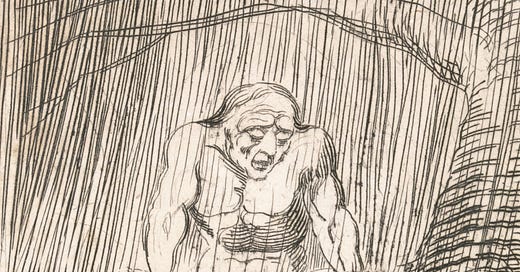Liviu Chelcea on drinking water in NYC
“As one interviewee explained, 'I drink tap water when I am at home, I take a bottle with me to get to my job, and there I drink from the water cooler.'”
This week at Public Seminar, we’re doing our best to stay hydrated, which of course has inspired us to return to Liviu Chelcea’s entertaining anthropological survey of New Yorkers’ idiosyncratic approaches to drinking water. “Inspecting the bottled water shelves in many parts of the city, I found water imported from Sweden, Fiji, Turkey, Romania, Serbia, Croatia, Slovenia, Ukraine, Russia, Georgia, Armenia, Poland, Iceland, New Zealand, Spain, Bosnia and Herzegovina, Germany, France, Italy, Japan, South Korea, Mexico, Albania, Greece, Portugal, and Bulgaria.”
Testing the Waters in Gotham
Liviu Chelcea
Some bakers claim that if there’s one thing more New York than a bagel, it’s the water used to make that bagel. In fact, NYC water has little calcium and is slightly alkaline, two processes that do not “strengthen the gluten in the dough” and slow down “the activity of the yeast.” Yet even the Department of Environmental Protection has embraced the myth, boasting in 2018 subway posters, “Yeah, it’s the water. NYC bagels aren’t NYC bagels without NYC water.” So if the city’s water is a point of pride, why aren’t more New Yorkers drinking it?
Choice in drinking water in New York is shaped by many factors. Beyond tap water, New Yorkers have access to bottled water, filters, and carbonation machines; what type of water they prefer is influenced by race, ethnicity, and sometimes religion. Some water coolers are managed collectively at the workplace. How water is consumed is also affected by mega-events and their aftermath, such as 9/11.
Although one would expect to have plenty of publicly available data about how New York’s residents drink water, the data is remarkably scarce. A 2009 study indicates that about a third drink bottled water, another third drink filtered tap water, and the rest direct tap water. More recent data that I collected in 2020 indicate some differences articulated around race, borough, class, and education. Only a minority—some 20–21 percent—of New Yorkers drink straight tap at home. Manhattanites drink more tap water than the other boroughs. Most New Yorkers drink filtered water (30–31 percent), followed by bottled water (22–23 percent). About three-quarters of New Yorkers are “purists” who feel strongly about one type of water. The remaining quarter are flexible, using different combinations of tap, filtered and bottled, thus challenging the either-or characterizations of water drinkers. The choices are even more complex if one considers out-of-home habits. As one interviewee explained, “I drink tap water when I am at home, I take a bottle with me to get to my job, and there I drink from the water cooler.”
New York City’s white population drinks more tap water than other racial groups. The Black population drinks more bottled water, and less straight tap and filtered water. The Asian population is clearly over-represented in filtered (and, as I learned anecdotally, boiled) water consumption, with seven in ten Asian residents filtering, compared with five in ten across the whole city. There is a slight tendency in non-college-educated residents to drink more bottled water than college-educated ones, suggesting a historical inversion compared to a few decades ago. Writing of the 1980s and 1990s, Matthew Gandy found that “a degraded public water supply system now operates in combination with increasing access to private sources of drinking water by the better-off, in a dangerous reversion to nineteenth-century patterns of service provision. The increasing use of bottled water by the rich also presents a bizarre inversion of the contemporary picture in developing countries, where the poor rely on expensive water vendors whereas the middle classes are connected to cheaper sources of piped water.”
Studies of water infrastructure focus, predictably, on the availability of tap, its quality, and its expansion inside cities and out into the watershed. Studies of bottled water consumption, however, rarely historicize non-tap water consumption, focusing on late modernity extraction of profit through water commodification, facilitated by advances in light plastic technologies.
Browsing nineteenth-century daily newspapers, I was surprised to learn that water filters were used before and after the inception of the Croton Aqueduct system in 1842. While some were simple sleeves, other filters were quite similar to the current day charcoal filters, the most common form of filters in urban homes. An 1846 ad mentioned that “patent diaphragm filters” made of “artificial stone “will last for years, and are afforded at $3, $4 and $5 each … for purification of the Croton and all River waters.”
Some turn-of-the-century, high-end restaurants, like their contemporary counterparts, noted on their menus that they used filtered water. In 1900, Hotel Netherland (1893–1927, located at Fifth Avenue and 59th Street) specified that “all the drinking water used in these premises is filtered by the Buhring system.” Prior to the 1920s spread of domestic refrigerators, water filters were used by local manufacturers of ice supplied households and restaurants, especially because of the pollution of underground water in the city. Knickerbocker Ice Company in Brooklyn explained that it “creates its ice from the purest water supply, in ice plants that are models of cleanliness—and filters the water four times.” Water coolers have also existed since the early 1900s, as did five gallon water jugs—made of glass, instead of their current incarnation in hard plastic.




